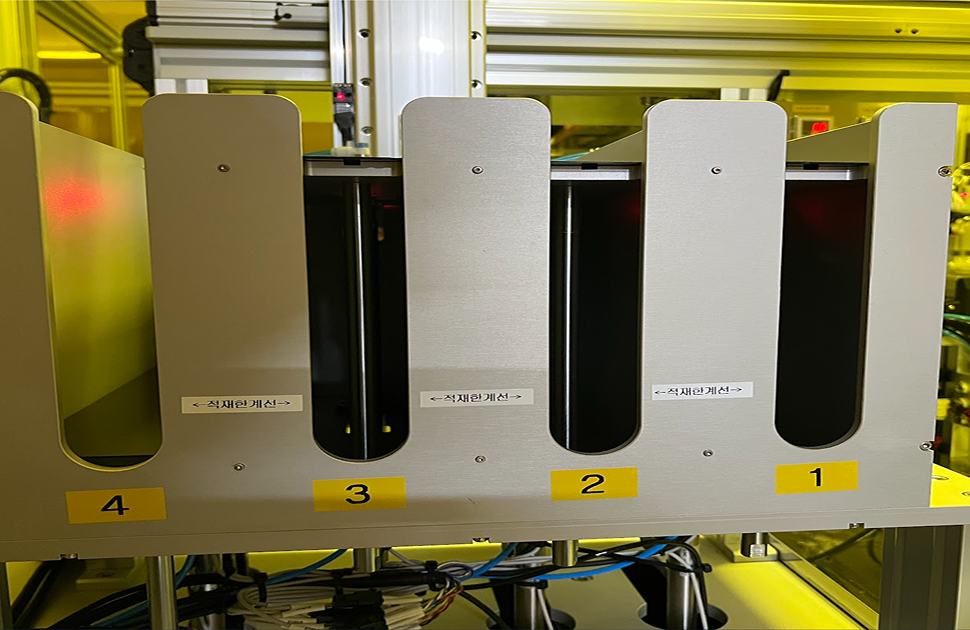X-PACS introduces a non-face-to-face evaluation system designed to address changes in industrial sites and the limitations of traditional radiographic testing (RT) film methods.
Background and Necessity
- Changes in Industrial Sites: The COVID-19 pandemic accelerated the expansion of non-face-to-face work environments.
- Limitations of Existing RT Film Methods: Traditional methods required manual interpretation and handwritten approvals, necessitating on-site visits. Image sharing was challenging, resulting in delays in data transfer.
- New Requirements: A growing need existed for a web-based review environment, an electronic approval and authorization system, and real-time data access.
Comparison of Existing Methods and Direction of Change
Scan Automation System
- Introduction Background: This system was introduced to achieve fully automated film handling, OCR-based information recognition, and conversion to DICONDE format with server integration.
- Core Objectives: The primary goals are to consistently generate structured data and convert analog films into digital inspection assets.
- Workflow: The process involves film loading, RT film scanning, character recognition (OCR), interleaf packaging, and discharge.
- Specifications: The scanning speed is approximately 30 seconds per sheet. The film loading capacity ranges from 250 to 1,000 sheets per day. The system consists of a 3-axis robot and a pneumatic handler, and the output format is DCM (DICONDE).
Film Image Acquisition and Data Capture
- The system uses a film scanner that complies with ISO 14096/ASTM V requirements. Software for automation (PLC interworking) and a Web UI for administrators have been developed.
- Data from the film is captured using OCR (Optical Character Recognition) technology.
Data Storage/Management and Retrieval
- Data is stored and managed on a DICONDE server via the scan automation facility.
- The system supports a Web API, providing DCM, TIFF, JPG, and metadata in text file formats.
DICONDE (Digital Imaging and Communication in Nondestructive Evaluation)
- DICONDE is an international standard for structured NDT image data based on ASTM E2339 (currently ASTM E2339-21).
- It is characterized as a structured data package, not just a simple image.
- The data format includes TIFF for high-resolution images and metadata for inspection information, location, and equipment details.
DICONDE Tags (Metadata)
The DICONDE standard defines various metadata, including Component Name (name of the inspected part), Component ID (unique identification number of the part), Modality (code for the NDE technique used), and Material Thickness.
ASTM E2339 (DICONDE)
(0010,0010) Component Name: Name or designation of the inspected component.
(0010,0020) Component ID: Unique identification number of the inspected component.
(0008,0060) Modality: Code indicating the NDE technique (inspection equipment) used.
Web DICONDE Viewer for Review
- Key features of the viewer include zoom, rotation, density adjustment, length measurement, and annotation.
- It simultaneously displays images and metadata, requires no separate installation, and is compatible with Chrome and Edge browsers.
- Users can confirm images in real-time on the Web Viewer and approve linked reports.
Workflow
The workflow involves digitizing RT films and storing data via the scan automation system. This data is integrated with X-PACS for interpretation, report confirmation, and electronic approval. Through a Web Service, shipowners and classification societies can review the data using the Web DICONDE Reviewer.
Conclusion
X-PACS found significant meaning in computerizing non-destructive testing procedures and establishing an approval system. Furthermore, in line with the shift towards DR and PAUT-centric inspections, the company is contributing to the standardization and integrated management of inspection data.









